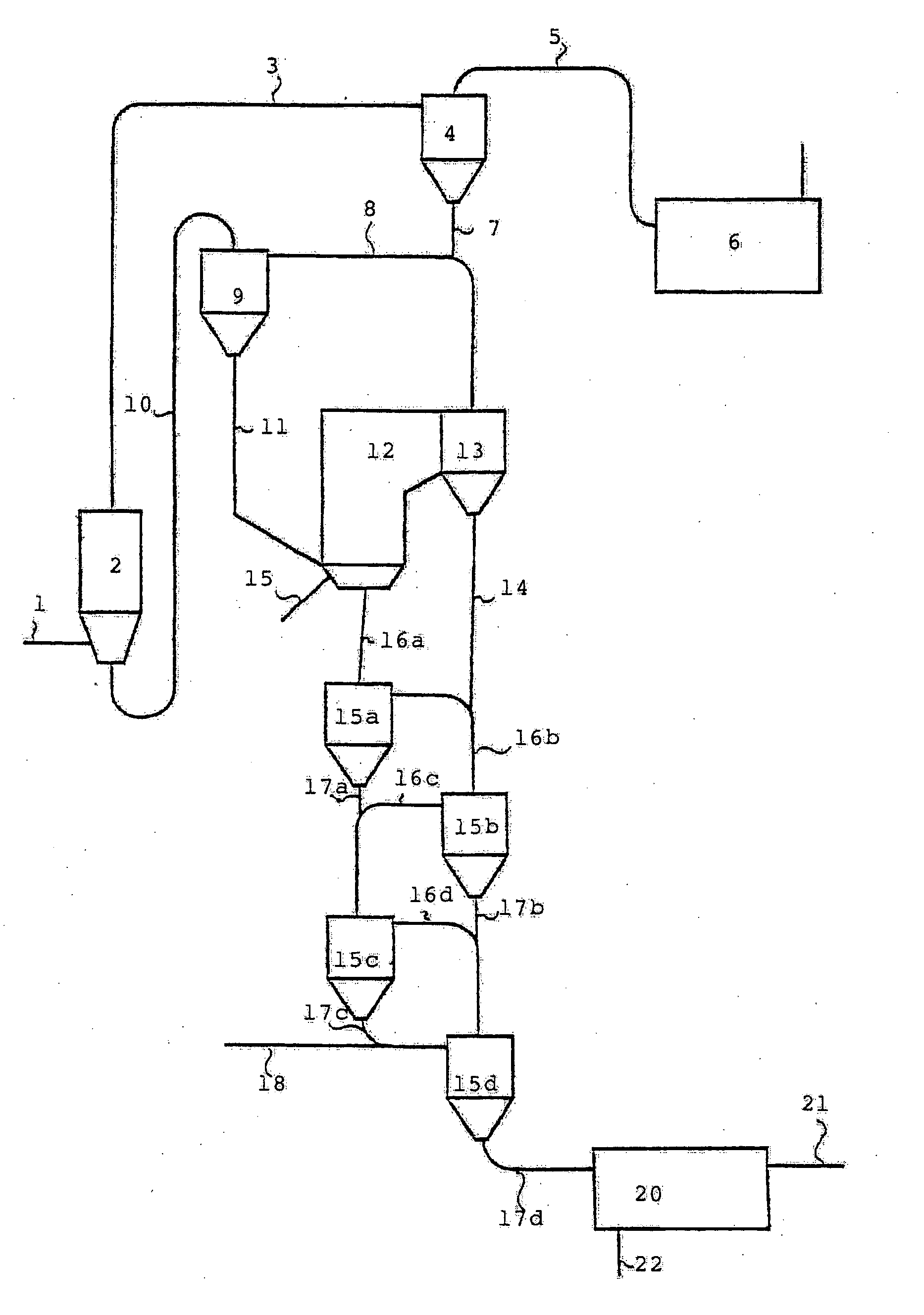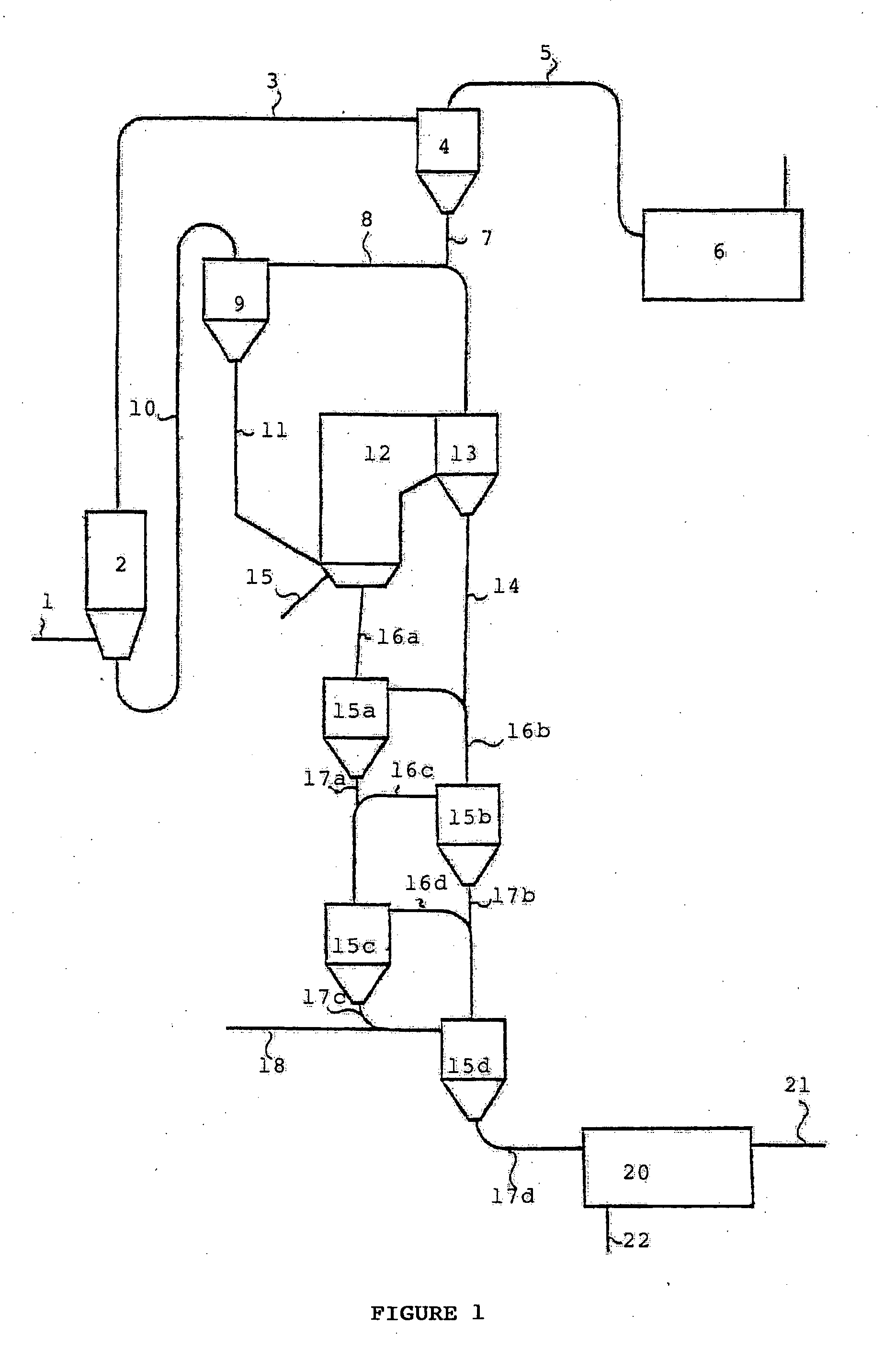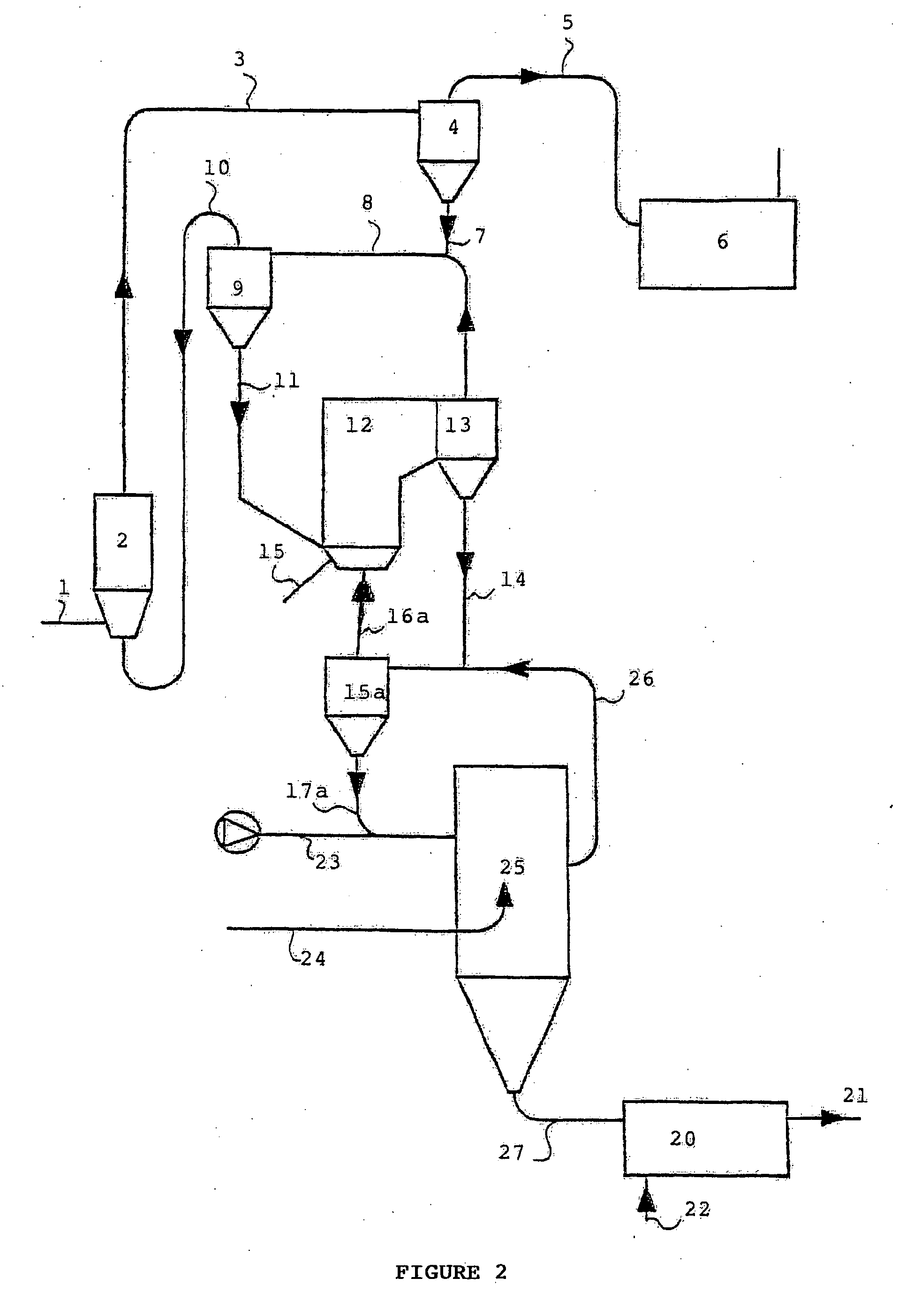Process and apparatus for the production of alumina
a technology of process and apparatus, applied in the direction of vortex flow apparatus, flat flow vortex, calculation, etc., can solve the problems of limited cost-effectiveness of fluid bed use, dust development, and material handling problems,
- Summary
- Abstract
- Description
- Claims
- Application Information
AI Technical Summary
Benefits of technology
Problems solved by technology
Method used
Image
Examples
examples
[0044] Test runs were conducted utilizing various sizes and configurations of the CCC of the present invention.
[0045] The parameters tested were as follows: [0046] a. Separation efficiency, calculated as x=MproductMfeed
x-cyclone separation efficiency [0047] M product=amount of collected material in the bottom of the cyclone, kg [0048] M feed=amount of material fed to the cyclone, kg
[0049] In cyclones utilized in alumina processes high (preferably above 65%) separation efficiencies are desirable. [0050] b. Heat capacity ratio (“H”), defined as the ratio of the heat capacity flow for the material relative to the gas. If H1, material is in excess, according to the following formula: H=mmat CpmatMgas Cpgas[0051] H=heat capacity ratio; m mat=mass flow of inlet material, kg / s; [0052] M gas=mass flow of inlet gas, kg / s; [0053] Cp mat=material average heat capacity from t mat,out to t mat,in, kcal / kg / K; [0054] Cp gas=gas average heat capacity from t gas,in to t gas,out, kcal / kg / K...
PUM
| Property | Measurement | Unit |
|---|---|---|
| temperature | aaaaa | aaaaa |
| temperature | aaaaa | aaaaa |
| temperature | aaaaa | aaaaa |
Abstract
Description
Claims
Application Information
 Login to View More
Login to View More - R&D
- Intellectual Property
- Life Sciences
- Materials
- Tech Scout
- Unparalleled Data Quality
- Higher Quality Content
- 60% Fewer Hallucinations
Browse by: Latest US Patents, China's latest patents, Technical Efficacy Thesaurus, Application Domain, Technology Topic, Popular Technical Reports.
© 2025 PatSnap. All rights reserved.Legal|Privacy policy|Modern Slavery Act Transparency Statement|Sitemap|About US| Contact US: help@patsnap.com



